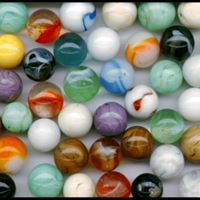Feng Juan Gao
age ~59
from San Francisco, CA
- Also known as:
-
- Feng J Gao
- Juan Gao Feng
- Feng Sau Tse
- Feng J Tse
- Juan Gao Young
- Gao Feng
- Phone and address:
- 274 Silver Ave, San Francisco, CA 94112
Feng Gao Phones & Addresses
- 274 Silver Ave, San Francisco, CA 94112
- Brisbane, CA
- 2515 Huckleberry Cir, West Sacramento, CA 95691 • 9163739629
- Philadelphia, PA
- Haddonfield, NJ
- Oaklyn, NJ
Name / Title
Company / Classification
Phones & Addresses
Owner
Sheng Gao Chinese Restuarant
Eating Place
Eating Place
859 Rte 45, Pilesgrove, NJ 08098
Principal
Awaken Authentic Chinese Massage
Misc Personal Services
Misc Personal Services
1763 2 St, Fairfield, CA 94559
President
AMERICAN CHAMPION TRAVEL, INC
1710 S Amphlett Blvd STE 10B, San Mateo, CA 94402
President
AMVILLAGE INTERNATIONAL INC
177 Bovet Rd #600, San Mateo, CA 94402
President
PACO WORLD COOPERATION INC
1470 Sand Hl Rd #103, Palo Alto, CA 94304
Managing
Zenith Fasteners LLC
Fastners Import & Wholesale · Metals Service Center
Fastners Import & Wholesale · Metals Service Center
60 Marblehead Ln, Novato, CA 94949
4153820398
4153820398
Resumes

Feng Gao
view sourceWork:
Dawn Specialty Service, LLC
St. Louis, MO
May 2008 to Dec 2012
Data Administrator eBay Online Business
Oct 2002 to Apr 2008 Harbin Hold computer Company
Harbin, CN
Sep 1999 to Mar 2002
Project Manager and SQL Developer
St. Louis, MO
May 2008 to Dec 2012
Data Administrator eBay Online Business
Oct 2002 to Apr 2008 Harbin Hold computer Company
Harbin, CN
Sep 1999 to Mar 2002
Project Manager and SQL Developer
Education:
Harbin University of Science and Technology
Jun 1999
B.S. in Application Electric Technology
Jun 1999
B.S. in Application Electric Technology
Isbn (Books And Publications)


Zhen Shi De Mao Zedong: Mao Zedong Shen Bian Gong Zuo Ren Yuan De Hui Yi
view sourceAuthor
Feng Gao
ISBN #
7507315479
Medicine Doctors

Feng Gao, Union City CA
view sourceSpecialties:
Nursing (Registered Nurse)
Address:
32711 Red Maple St, Union City, CA 94587
Languages:
English
Us Patents
-
Cleaning Residues From Surfaces In A Chamber By Sputtering Sacrificial Substrates
view source -
US Patent:6814814, Nov 9, 2004
-
Filed:Mar 29, 2002
-
Appl. No.:10/109736
-
Inventors:Alan W. Collins - San Francisco CA
Feng Gao - Fremont CA
Tetsuya Ishikawa - Santa Clara CA
Padmanaban Krishnaraj - San Francisco CA
Yaxin Wang - Fremont CA -
Assignee:Applied Materials, Inc. - Santa Clara CA
-
International Classification:B08B 312
-
US Classification:134 1, 134 11, 134 221, 134 22, 134 30, 134 56 R, 134 951, 134166 R, 216 37, 216 67, 216 71, 438714, 438905, 438906
-
Abstract:In a method of cleaning process residues formed on surfaces in a substrate processing chamber, a sacrificial substrate comprising a sacrificial material is placed in the chamber, a sputtering gas is introduced into the chamber, and the sputtering gas is energized to sputter the sacrificial material from the substrate. The sputtered sacrificial material reacts with residues on the chamber surfaces to clean them. In one version, the sacrificial substrate comprises a silicon-containing material that when sputtered deposits silicon on the chamber walls that reacts with and cleans fluorine-containing species that are left behind by a chamber cleaning process.
-
Bidirectional Split Gate Nand Flash Memory Structure And Array, Method Of Programming, Erasing And Reading Thereof, And Method Of Manufacturing
view source -
US Patent:7247907, Jul 24, 2007
-
Filed:May 20, 2005
-
Appl. No.:11/134557
-
Inventors:Feng Gao - Sunnyvale CA, US
Ya-Fen Lin - Santa Clara CA, US
John W. Cooksey - Brentwood CA, US
Changyuan Chen - Sunnyvale CA, US
Yuniarto Widjaja - San Jose CA, US
Dana Lee - Santa Clara CA, US -
Assignee:Silicon Storage Technology, Inc. - Sunnyvale CA
-
International Classification:H01L 29/788
-
US Classification:257315, 257316, 257321, 257324, 257326, 438201, 438257, 438258
-
Abstract:A split gate NAND flash memory structure is formed on a semiconductor substrate of a first conductivity type. The NAND structure comprises a first region of a second conductivity type and a second region of the second conductivity type in the substrate, spaced apart from the first region, thereby defining a channel region therebetween. A plurality of floating gates are spaced apart from one another and each is insulated from the channel region. A plurality of control gates are spaced apart from one another, with each control gate insulated from the channel region. Each of the control gate is between a pair of floating gates and is capacitively coupled to the pair of floating gates. A plurality of select gates are spaced apart from one another, with each select gate insulated from the channel region. Each select gate is between a pair of floating gates.
-
Printing Of Organic Conductive Polymers Containing Additives
view source -
US Patent:7351357, Apr 1, 2008
-
Filed:Feb 26, 2003
-
Appl. No.:10/374875
-
Inventors:Feng Gao - Wilmington DE, US
-
Assignee:E.I. du Pont de Nemours and Company - Wilmington DE
-
International Classification:H01B 1/04
H01B 1/12
B05D 5/12 -
US Classification:252500, 252510, 427 961, 427122
-
Abstract:Additives to organic conducting polymers are described which enhance adhesion and resolution of printed films while retaining adequate electrical conductivity. The conductive polymer films are useful in printing conductive portions of thin film transistors such as sources and drains. Additives include surfactants, second macromolecules, plasticizers, and excess sulfonic acids.
-
Bidirectional Split Gate Nand Flash Memory Structure And Array, Method Of Programming, Erasing And Reading Thereof, And Method Of Manufacturing
view source -
US Patent:7544569, Jun 9, 2009
-
Filed:Sep 5, 2006
-
Appl. No.:11/516431
-
Inventors:Feng Gao - Sunnyvale CA, US
Ya-Fen Lin - Santa Clara CA, US
John W. Cooksey - Brentwood CA, US
Changyuan Chen - Sunnyvale CA, US
Yuniarto Widjaja - San Jose CA, US
Dana Lee - Santa Clara CA, US -
Assignee:Silicon Storage Technology, Inc. - Sunnyvale CA
-
International Classification:H01L 21/336
-
US Classification:438266, 438257, 438258, 438261, 438262, 438264, 438287, 438288, 438622, 438672, 257E21679, 257E21681
-
Abstract:A split gate NAND flash memory structure is formed on a semiconductor substrate of a first conductivity type. The NAND structure comprises a first region of a second conductivity type and a second region of the second conductivity type in the substrate, spaced apart from the first region, thereby defining a channel region therebetween. A plurality of floating gates are spaced apart from one another and each is insulated from the channel region. A plurality of control gates are spaced apart from one another, with each control gate insulated from the channel region. Each of the control gate is between a pair of floating gates and is capacitively coupled to the pair of floating gates. A plurality of select gates are spaced apart from one another, with each select gate insulated from the channel region. Each select gate is between a pair of floating gates.
-
Printing Of Organic Conductive Polymers Containing Additives
view source -
US Patent:20050116202, Jun 2, 2005
-
Filed:Feb 26, 2003
-
Appl. No.:10/501603
-
Inventors:Feng Gao - Wilmington DE, US
-
International Classification:H01C001/00
-
US Classification:252500000
-
Abstract:Additives to organic conducting polymers are described which enhance adhesion and resolution of printed films while retaining adequate electrical conductivity. The conductive polymer films are useful in printing conductive portions of thin film transistors such as sources and drains. Additives include surfactants, second macromolecules, plasticizers, and excess sulfonic acids.
-
Integrated Semiconductor Metal-Insulator-Semiconductor Capacitor
view source -
US Patent:20060017084, Jan 26, 2006
-
Filed:Jul 22, 2004
-
Appl. No.:10/897045
-
Inventors:Feng Gao - Sunnyvale CA, US
Changyuan Chen - Sunnyvale CA, US
Vishal Sarin - Cupertino CA, US
William Saiki - Mountain View CA, US
Hieu Tran - San Jose CA, US
Dana Lee - Santa Clara CA, US -
International Classification:H01L 29/76
-
US Classification:257296000
-
Abstract:An integrated MIS capacitor has two substantially identical MIS capacitors. A first capacitor comprises a first region of a first conductivity type adjacent to a channel region of the first conductivity type in a semiconductor substrate. The semiconductor substrate has a second conductivity type. A gate electrode is insulated and spaced apart from the channel region of the first capacitor. The second capacitor is substantially identical to the first capacitor and is formed in the same semiconductor substrate. The gate electrode of the first capacitor is electrically connected to the first region of the second capacitor and the gate electrode of the second capacitor is electrically connected to the first region of the first capacitor. In this manner, the capacitors are connected in an anti-parallel configuration. A capacitor which has high capacitance densities, low process complexity, ambipolar operation, low voltage and temperature coefficient, low external parasitic resistance and capacitance and good matching characteristics for use in analog designs that can be integrated with existing semiconductor processes results.
-
Integrated Semiconductor Metal-Insulator-Semiconductor Capacitor
view source -
US Patent:20090096507, Apr 16, 2009
-
Filed:Nov 13, 2008
-
Appl. No.:12/270604
-
Inventors:Feng Gao - Sunnyvale CA, US
Changyuan Chen - Sunnyvale CA, US
Vishal Sarin - Cupertino CA, US
William John Saiki - Mountain View CA, US
Hieu Van Tran - San Jose CA, US
Dana Lee - Santa Clara CA, US -
Assignee:Silicon Storage Technology, Inc. - Sunnyvale CA
-
International Classification:H03K 3/01
-
US Classification:327534
-
Abstract:An integrated MIS capacitor has two substantially identical MIS capacitors. A first capacitor comprises a first region of a first conductivity type adjacent to a channel region of the first conductivity type in a semiconductor substrate. The semiconductor substrate has a second conductivity type. A gate electrode is insulated and spaced apart from the channel region of the first capacitor. The second capacitor is substantially identical to the first capacitor and is formed in the same semiconductor substrate. The gate electrode of the first capacitor is electrically connected to the first region of the second capacitor and the gate electrode of the second capacitor is electrically connected to the first region of the first capacitor. In this manner, the capacitors are connected in an anti-parallel configuration. A capacitor which has high capacitance densities, low process complexity, ambipolar operation, low voltage and temperature coefficient, low external parasitic resistance and capacitance and good matching characteristics for use in analog designs that can be integrated with existing semiconductor processes results.
-
Method For Batch File Printing And Related User Interface
view source -
US Patent:20090323098, Dec 31, 2009
-
Filed:Jun 25, 2008
-
Appl. No.:12/145783
-
Inventors:Feng Gao - Sunnyvale CA, US
-
Assignee:KONICA MINOLTA SYSTEMS LABORATORY, INC. - Huntington Beach CA
-
International Classification:G06F 3/12
-
US Classification:358 115
-
Abstract:A batch file printing method is described. A user opens a file using an application, and issues a print request. From the print dialog box, the user chooses to set printing preferences. The print preferences dialog box includes tabs for setting various printing references, and an additional batch file printing tab for selecting a number of files to be printed as the same batch using the same printing preferences. The batch file printing tab includes a file list box showing the files to be included in the batch and buttons allowing the user to add files to or remove files from the list. The selected files, along with the currently open file, are printed at once using the same printing preferences set by the user. The selected files may be in different folders, and may be different type of files.
Plaxo

Feng Gao
view sourceFeng 素質
News

NIH-halted study unveils its massive analysis of bat coronaviruses
view source- Duke Universitys Feng Gao, who led an analysis published on 29 May in Science about the evolution of SARS-CoV-2, says the new work by Daszak, Shi, and colleagues underscores that researchers have just sampled the tip of the iceberg of the coronaviruses circulating between bats that could jump int
- Date: Jun 01, 2020
- Category: Health
- Source: Google

Evolution of pandemic coronavirus outlines path from animals to humans
view source- "Very much like the original SARS that jumped from bats to civets, or MERS that went from bats to dromedary camels, and then to humans, the progenitor of this pandemic coronavirus underwent evolutionary changes in its genetic material that enabled it to eventually infect humans," said Feng Gao, M.D.
- Date: May 29, 2020
- Category: Health
- Source: Google
Flickr
Myspace
Googleplus

Feng Gao
About:
日久見人心 ^^
Bragging Rights:
中華足球奧運培訓隊^^

Feng Gao
Work:
Fujitsu
Sangfor
Sangfor
Education:
NEU - Software college

Feng Gao
Education:
University of California, Berkeley, Sun Yat-sen University
About:
I feel good just to keep my blogs up-to-date.

Feng Gao
Work:
YiLongFeng Tech.Co.,Ltd - President
Education:
University College London

Feng Gao
About:
糕盼的平方

Feng Gao
Education:
Peking University

Feng Gao
Education:
University College of Gävle

Feng Gao
About:
中指劳损者
Classmates

Feng Gao
view sourceSchools:
Jinan University Guangzhou China 1967-1971

Feng Gao
view sourceSchools:
Windsor School Flushing NY 2001-2005
Community:
Bruce Eder, Jean Sobolow, Linda Comac, David Federbush

Feng Gao, Hopi High Schoo...
view source
Jinan University, Guangzhou
view sourceGraduates:
Feng Gao (1967-1971),
Mumian Gao (1983-1987),
Zhuoying Peng (1992-1996),
Chau Chuen Yan (1994-1998)
Mumian Gao (1983-1987),
Zhuoying Peng (1992-1996),
Chau Chuen Yan (1994-1998)

Hopi High School, Keams c...
view sourceGraduates:
Feng Gao (1993-1997),
Dorcia Chee (1995-1999),
Collin Campus (1996-2000),
Ema Mae Thompson (2003-2007),
Alysia Kewanyama (2006-2010)
Dorcia Chee (1995-1999),
Collin Campus (1996-2000),
Ema Mae Thompson (2003-2007),
Alysia Kewanyama (2006-2010)

Windsor School, Flushing,...
view sourceGraduates:
Marleyne Massen (1969-1973),
Allen Alvir (1991-1995),
Feng Gao (2001-2005),
Anthony Valentino (1979-1983)
Allen Alvir (1991-1995),
Feng Gao (2001-2005),
Anthony Valentino (1979-1983)

Hartford Central School, ...
view sourceGraduates:
Gao Feng (1996-2000),
Brandi Andrews (1986-1990),
April Jordan (1990-1993),
David Harringotn (1970-1978)
Brandi Andrews (1986-1990),
April Jordan (1990-1993),
David Harringotn (1970-1978)
Youtube

Feng Gao
view source
Feng Gao
view source
Xiao Feng Gao
view source
Feng Gao
view source
Feng Gao
view source
Feng Gao
view source
Feng Gao Hg
view source
Feng Gao
view sourceGet Report for Feng Juan Gao from San Francisco, CA, age ~59












![(Rang Feng Gao Su Ni) [Let The Wind Tell You] - Ge... (Rang Feng Gao Su Ni) [Let The Wind Tell You] - Ge...](https://i.ytimg.com/vi/Bb0pN30qoyU/hqdefault.jpg?sqp=-oaymwE2COADEI4CSFXyq4qpAygIARUAAIhCGAFwAcABBvABAfgB_gmAAtAFigIMCAAQARgPIGQoZTAP&rs=AOn4CLBB0nWsQ-2jNqcXa2kIG2cJDf7URw)

